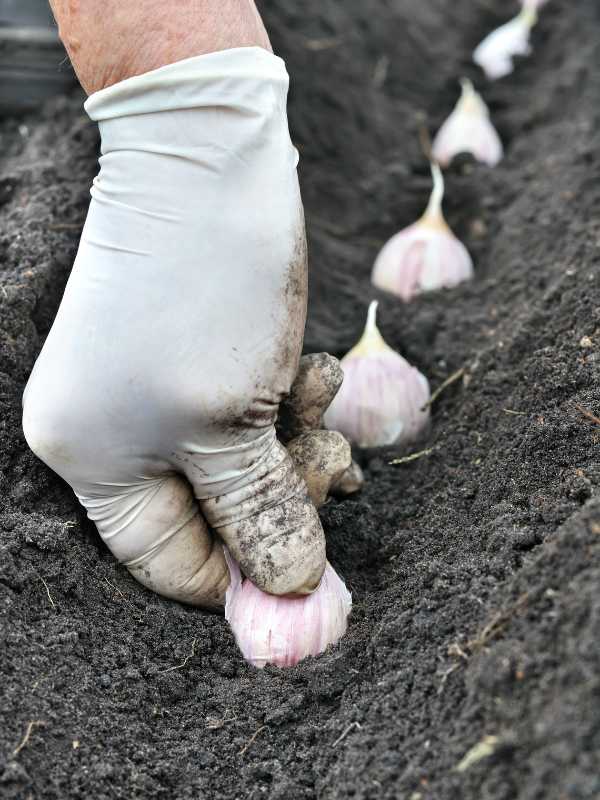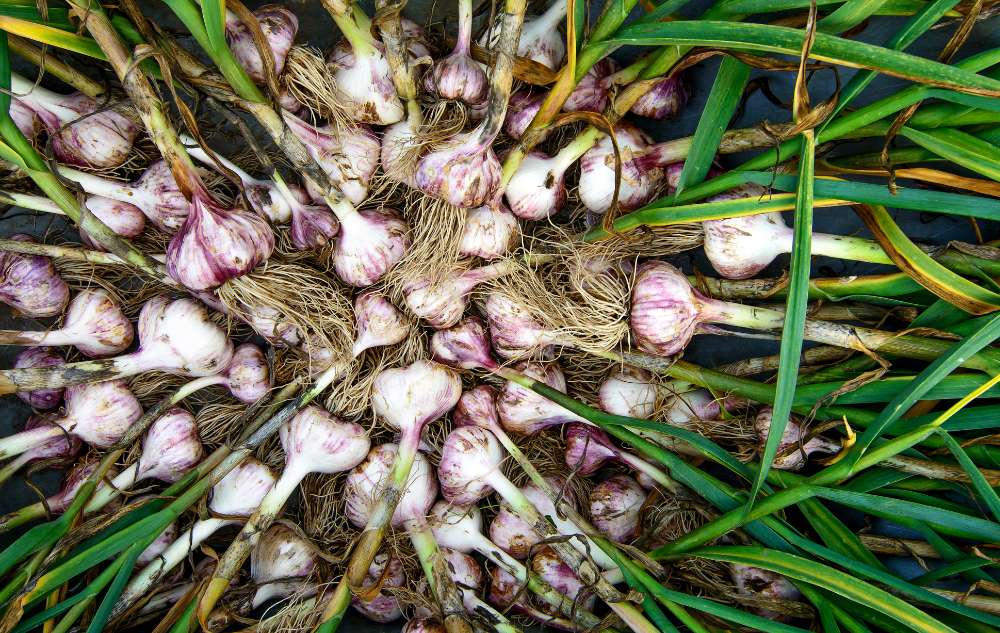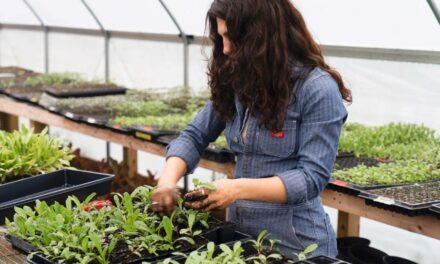Fall is the perfect time to plant garlic.
There are so many varieties; it is also one of the easiest vegetables to grow, and besides, there is nothing quite like fresh garlic from your garden.
The ideal time to plant garlic is in October or November, before the season’s first hard frost. If you live in a region that is still relatively warm, it’s not too late to plant your bulbs. Garlic needs cold temperatures to develop. Each individual clove split from a garlic bulb and covered in its thin, papery layer will develop into its own bulb over time and will be ready to harvest in July.
Garlic bulbs come in two different varieties: hardneck and softneck. Hardnecks such as Musica and Spanish Roja are among the best choices for the Northern part of the country. Hardneck garlic is heartier and can withstand cold temperatures. It also produces delicious green curly scapes. More on that as you read on. Softneck garlic, such as Silver White and Lorz Italian, is popular in the south as it loves the warmer climate. They do not produce scapes.
Purchasing garlic from your local farmer’s markets or seed catalogs online, such as High Mowing Organic Seeds, Johnny’s Selected Seeds, and Renee’s Garden, is ideal. Store-bought garlic bulbs can be used; if you go this route, look for organic bulbs, as some grocery varieties may be treated and may not produce new bulbs.
Planting garlic is really easy.
Follow these simple directions:
- Add organic fertilizer and matter, such as compost, from your compost pile to the soil and mix.
- Dig a trench approximately 2-3 inches deep. If planting multiple rows, make sure the rows are 4-6 inches apart.
- Push the clove root down in the soil with the garlic clove tip facing upwards. Planting the garlic cloves deep enough is vital so that fluctuating temperatures do not harm them.
- Cover with soil and 3-4 inches of straw or mulched leaves to help keep the soil moist.

A shoot resembling a green onion will form and curl in the spring.
This is the garlic scape, which will flower and, if left alone, will develop seeds and produce a smaller garlic bulb. Cutting the scapes when they form a loop is essential so that the energy the plant produces goes into the underground garlic bulb. If the garlic scapes are not harvested in time, the developing seed heads can be saved and planted in the following year’s fall. Those seeds may take some time to develop into a bulb, which you can grow in the fall or use as you would the garlic cloves. Garlic scapes are edible and can replace garlic in salads, pesto, pasta, soups, risotto, and other recipes.
Try our Garlic Scape and Kale Pesto recipe.
When you’re ready to harvest the garlic bulbs, select a day in July when the weather is free from rain and half of the leaves are yellow or brown.
- Dig up the bulbs individually by pulling from the base of the plant or using a small garden shovel carefully so they are not bruised. Gently brush off the dirt. How exciting to find that the one individual clove grew into a beautiful new head of garlic!
- Washing and watering the bulbs is only recommended if you plan to use a bulb in a recipe immediately after harvesting.
- Let the garlic bulbs dry (with dirt and all!) for three weeks in a dry location. The outer skin covering will feel like paper.
- Store garlic in recycled onion or produce non-plastic bags or cardboard boxes in dark, cool, dry locations.
- If you find some of the garlic bulbs too small for use, save and store them in a dry location and replant them in the fall.











